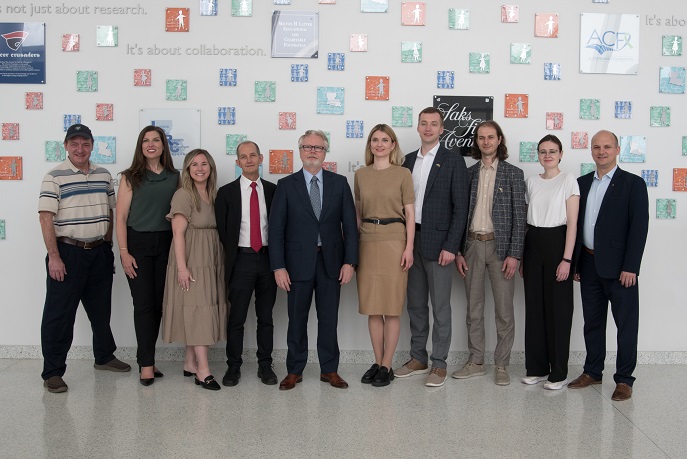
Dr. Joe W. Ramos Listens and Learns About Cancer Research in the State of Louisiana
One of the first official acts of the new Director and CEO of the Louisiana Cancer Research Center was to hit the road. Dr. Joe W. Ramos visited with healthcare and research leaders throughout the state to introduce himself and gain an understanding the work in various communities with regard to cancer research and patient care, community outreach, engagement and education. The renowned cancer biologist was accompanied by LCRC Chief Administrative Officer Sven Davisson, Board Member Arthur Cooper and his colleagues from Louisiana Economic Development.
It was eye opening for Ramos, who, in the third week of his new job, embarked on a listening tour that took him to over a dozen different entities in all corners of the state. Over the course of his first two trips, he traveled to Baton Rouge, through Acadiana, and across the northern regions of the state.
He visited education entities including Louisiana StateUniversity Veterinary Medical School, LSU Shreveport Health Science Center, University of Louisiana Lafayette, Grambling State University, Louisiana Tech, and University of Louisiana Monroe Pharmacy School; hospitals such as Our Lady of the Lake, Mary Bird Perkins Cancer Center, Ochsner/LSU Shreveport, Feist-Weiller Cancer Center, Christus Highland Medical Center, Overton Brooks VA Medical Center, and Willis-Knighton Cancer Center; and research centers including Pennington Biomedical, New Iberia Research Center, and the Center forMolecular Imaging and Therapy. Ramos also met with individuals from theBaton Rouge Health District and representatives from Federally Qualified Health Centers that serve the needs of the most underserved in the state.
“In every institution that we visited, we saw outstanding high-quality work in different and often complementary aspects of cancer research, prevention, community engagement, patient care, and education” Ramos said. “Institutions are doing topnotch, cancer research in a number or areas, including nutrition, obesity, mechanism, therapeutics, cutting-edge bioinformatics and nanotechnologies.”
Ramos pointed out that much of the basic and clinical research is funded by NIH grants. “That is one indication of work at the very highest level,”he explains, noting that in order to win an NIH grant, the application must typically score in the top 10% or so of grants in that review session. “There are people doing this high quality research in Shreveport, Monroe, Lafayette, Baton Rouge - basically in all of the places we visited. We are fortunate to have these top researchers working on our cancer problems in Louisiana.”
Ramos was just as impressed by community outreach programs throughout Louisiana, something he considers a pillar of his strategy to reduce cancer in Louisiana. “The level of interaction that community hospitals had with their patients was impressive. The ones I saw were very much engaged with their patients and concerned about how they could access screenings and navigate care should they need it,” Ramos said.
Next steps?
Ramos expects to travel regularly as he continues to map out a plan for the LCRC. “I want to make sure that the people we met with are part of our re-envisioning of the Louisiana Cancer Research Center. The trip was extremely useful as we develop a strategy for the Louisiana Cancer Research Center that supports the important work that is being done throughout the state.”




